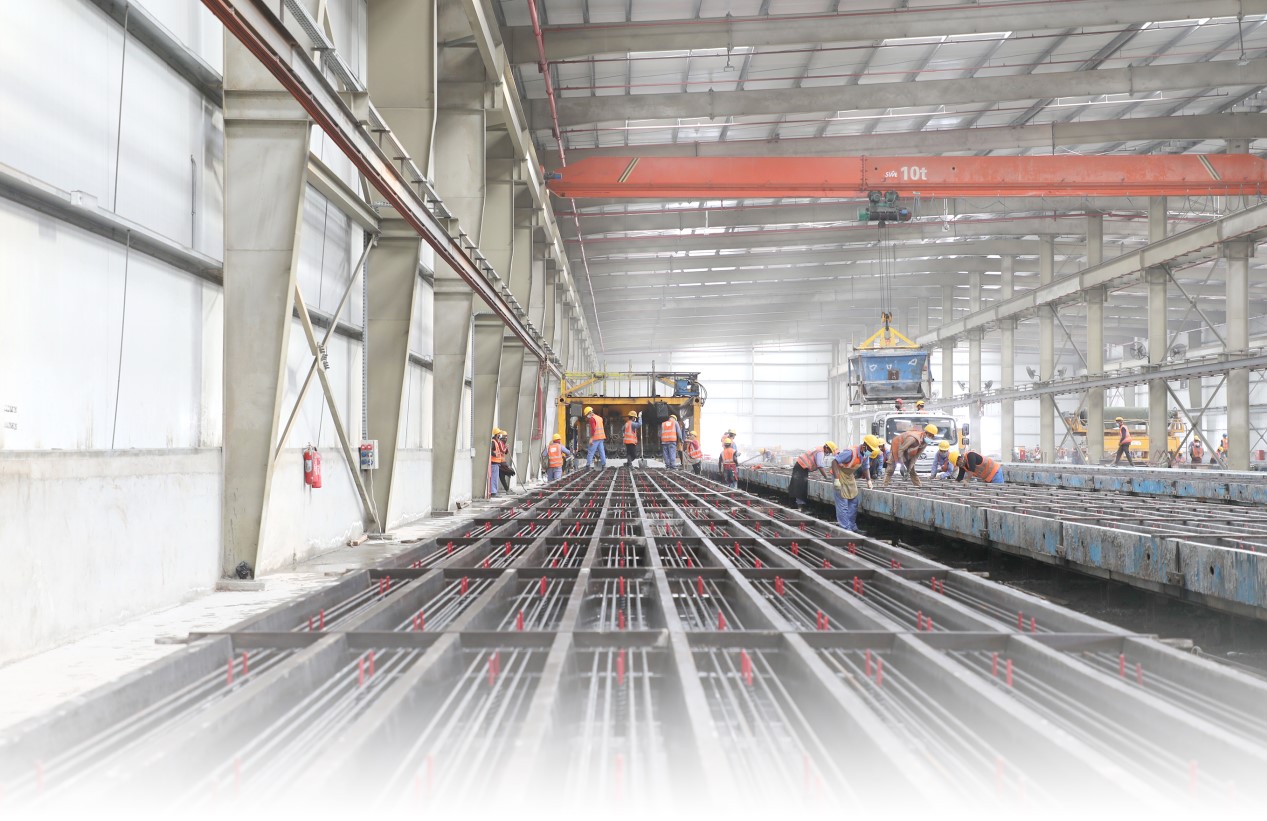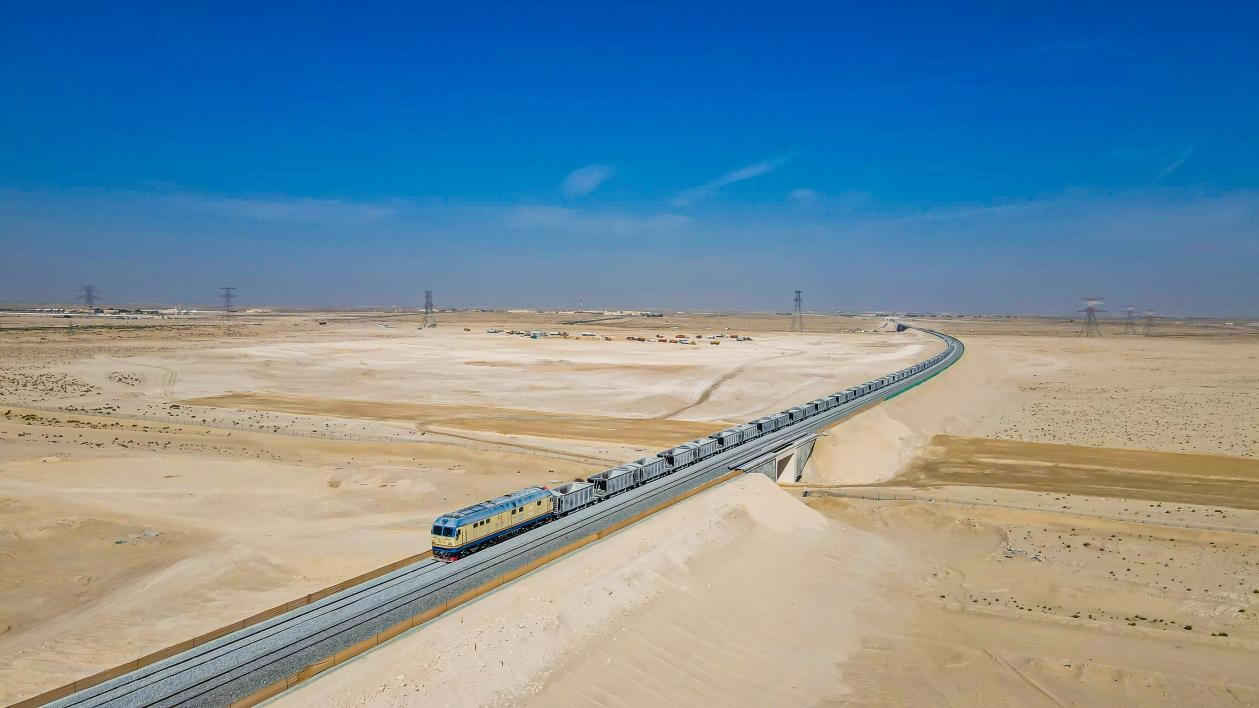
The mainline track of the second stage of the Etihad Rail national rail network in the United Arab Emirates (UAE) has been completed recently.
Linking the five emirates of Abu Dhabi, Dubai, Sharjah, Fujairah and Ras Al Khaimah, the transport artery that runs from the east to the west of the UAE will soon be put into use.

Chinese technicians work on a crosstie production line for the second stage of the Etihad Rail national rail network in the United Arab Emirates, September 2022. (People's Daily/Shen Xiaoxiao)
The B, C, and D sections were jointly constructed by China Civil Engineering Construction Corporation (CCECC) and local enterprises. It stretches 424 kilometers and connects major industrial centers, manufacturing bases, logistics hubs, densely populated areas and key ports of the UAE. It was a challenging task that came with an extremely complicated construction environment and covered a wide range of areas, including 182 bridges, 313 culverts and nine tunnels, as well as 1,745 facility relocation projects.
The quality and precision of crossties have a direct impact on the speed, safety and comfort of the trains running on them. To meet construction standards and improve the efficiency of the project, the CCECC has set up a track-laying base between Abu Dhabi and Dubai, which produces crossties required for the project with Chinese equipment.
The base has eight production lines with a daily capacity of 3,200 crossties in total, which means a maximum monthly output of over 90,000 crossties.
"The high-quality crossties we produce can last 50 years in the corrosion environment of saline-alkali areas. Besides, they help the railway project lower cost and improve efficiency because they are free from procurement and logistics constraints," said Zhou Cheng, who's in charge of the rail track of the second stage project.

A ballast train runs along a line in Section B of the second stage of the Etihad Rail national rail network in the United Arab Emirates. (Photo courtesy of China Civil Engineering Construction Corporation)
In February 2021, samples of the crossties passed authoritative tests with their technical indexes exceeding American standards.
The project also referred to Chinese standards when designing and constructing tunnels, bridges, railroad beds and reinforced retaining walls. It finalized plans according to the strictest international standards to ensure the best engineering quality.
Bouzidi Toufik is a senior engineer of CCECC's Tunnel Department, who was responsible for the soil investigation of tunnels along the railway.
"The Chinese team adhered to high standards during construction, and the Chinese technologies and equipment played an important role in ensuring high-quality construction of the project," Toufik said.
According to Toufik, the excavation of the T1 tunnel, a construction part of Section D of the project, was a huge challenge because of the broken rocks and the poor stability of the tunnel. The tunnel crossed multiple fault fracture zones and water was leaking from the cracks in it, which made the excavation difficult and dangerous, he told People's Daily, adding that any improper construction would lead to accidents.
"The Chinese team didn't adopt traditional drilling and blasting methods. It made adjustments according to international standards, such as reinforcing support measures and using auxiliary equipment. It improved efficiency and ensured the safety of the excavation," Toufik said.
The construction and operation of the project have created more than 17,000 jobs for local communities and nurtured a large batch of railway construction and management talents.

A ballast train passes by a garden along the Etihad Rail national rail network in the United Arab Emirates. (Photo courtesy of China Civil Engineering Construction Corporation)
Abdelfattah Ibrahim, 30, started working on the project in 2020. Growing from a rookie into an experienced engineer, he has been awarded for times.
"Together with my Chinese colleagues, we have tackled many challenges in designing and construction, significantly improving the efficiency of track laying. My Chinese colleagues are professional, and I'm glad to have joined a Chinese firm that made my dream come true," said Ibrahim.
CEO of Etihad Rail Shadi Malak said Chinese enterprises, with reliable technologies and engineering quality, have efficiently advanced the progress of the project.
"They demonstrated a strong contractual capacity and a responsible attitude, lifting UAE's infrastructure onto a new level," he told People's Daily.